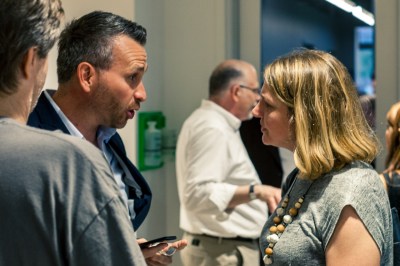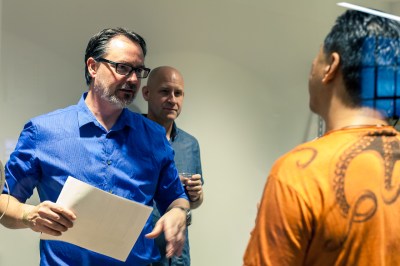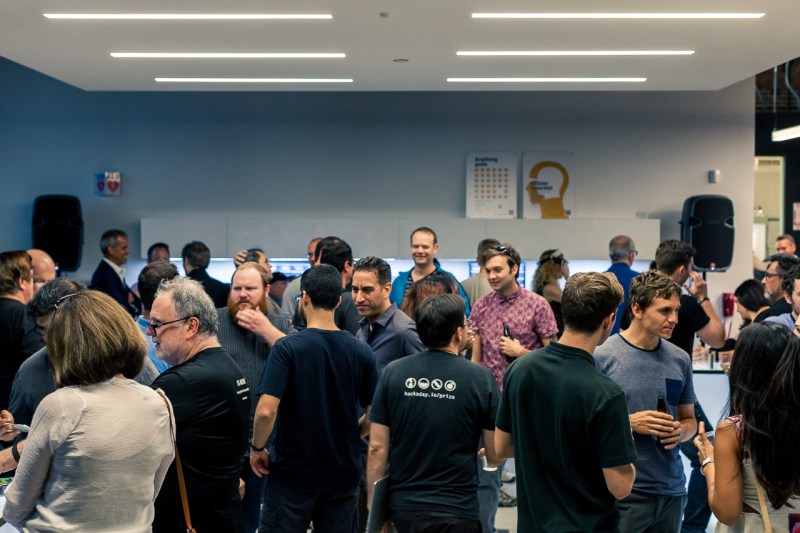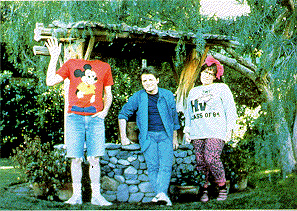Last week the Supplyframe Design Lab in Pasadena opened it’s doors, welcoming in the community to explore the newly rebuilt interior which is now filled with high-end prototyping and fabrication tools and bristling with work areas to suit any need. I had a chance to pull a few people aside during the opening night party to talk about how the Design Lab came about and what we can expect coming out of the space in the near future.
Opening night was heavily attended. I recognized many faces, but the majority of those exploring the building were new acquaintances for me. This is likely due to a strong connection the Design Lab is building with the students, faculty, and graduates of the ArtCenter College of Design. Located just down the road, it is one of the top design schools in the world.

Supplyframe Design Lab
Supplyframe was founded in Pasadena and when building a creative space in town it makes perfect sense to reach out and embrace everything that is happening at that school. Cory Grosser, the architect behind this project is a graduate of ArtCenter. What he accomplished with the Design Lab space is a testament to the sort of talent the school is known for. It will attract designers who will work beside engineers (and yes even hardware hackers) and surely lead to collaborations that will go beyond what could have been accomplished separately. After all, you can have the best electronic device in the world but a crude-looking enclosure is an uphill battle for widespread adoption. The same can be said for great design that doesn’t have the hardware to hold it up.

questions in the rapid prototyping room
Getting people into the same place is just the first step. The next is to break down any barriers to building their wildest dreams. Having amazing tools on hand is one part of that, but you also need people who know how to use the tools and have the fabrication expertise to boot. The Design Lab has a full-time resident engineer, Dan Hienzsch, responsible for the space, the tools, and the creative process within.
Dan is a jack of all trades and a great personality. For the last several months he has been working on installing and calibrating all the equipment in the lab. For rapid prototyping this includes a couple of SeeMeCNC Rostock Max V2 delta 3D Printers, a trio of Deezmaker Bukito printers, a Stratasys Objet24 print, and an Epilog Helix laser cutter. For electronics prototyping, the space offers Othermill milling machines for routing PCBs, and an assembly and testing area packed full of great bench tools. The heavy equipment room includes a Tormach PCNC 1100 milling machine, a ShopBot PRSAlpha for milling full sheets of material, and a full set of woodworking tools. Of course there are beefy workstations with design software ready for the CAD work needed to leverage all of the CNC goodness.
Which brings us to the question of who is going to use this space? I met two of the residents at the opening, both are extremely excited to get into the space and begin their residencies. That is just a few days away as their three-month tenure begins on Friday. Ben will be furthering his Perceptoscope project which will result in a mixed-reality installation in the form factor of one of those coin-operated binoculars found at scenic tourist areas. Tim builds synthesizers and will be putting the heavy tools to good use as he prototypes new interfaces for his latest project called NanoEgg. I bumped into them hanging out together at the party, already riffing on each others’ ideas.

There were a number of people asking in the comments of last week’s post what the residents “give up in exchange for” the residency program. I asked Aleksandar Bradic, the CTO of Supplyframe, about that during the video interview above, and you should listen to his response. The short answer is: nothing. Also in the video above is Cory Grosser’s explanation that the space is set up to present “making as theater”. The story of those residencies is what is coming out of this space. Showing what you are working on during development, and working to inspire others to take on their own creation is the tradeoff for three months in this amazing place. And there’s a monthly stipend to help offset your costs. If this sounds like your cup of tea, you can still apply for a residency.
Sophi Kravitz put in a lot of work to design the Residency Program. She has a background as an artist and that space has proven that residencies are great for everyone. Modeling the concept in a hardware space helps realize the idea that hardware creation is art. In addition to this long-term arrangement, I think the Supplyframe Design Lab has set itself up to attracting creative people for shorter events. During the day, the lab is for the residents, but on the evenings and weekends the space has a larger purpose. I hope to see leaders in art, design, electronics, and many other fields participate by presenting lectures, workshops, and demonstrations. The artist — Moe Notsu — working in chalk on the walls of the space during opening night was a pleasant surprise, and just proves the potential to find interesting people on hand bringing the building to life. Check out a time-lapse video of the chalk art just after the image gallery below.


























what is the ceiling material in the machine shop/conference room? real wood planks or some kind of faux wood paneling? is it suspended?
We’re not going to talk about that.
It appears that some of us are!
My first thought too. That room is upside down and is giving me a headache.
Your post really captured this wonderful event nicely, Mike! Can’t wait to spend more time there.
Thanks John, much appreciated! It was great to finally meet you.
Very nice. I can’t tell you how relieved I am to see no man-buns!
That chalk art is amazing. I hope it will be preserved somehow, it would be a shame if someone leaned against the wall and ruined it.
Chalk art is fleeting, you simply must enjoy the act as performance. I hope that several times a year artists are invited in to use the space. Would be great to set up a multi-artist collaborative project too!
Impermanence is also amazing.
Mike, there is something very annoying about how most of your posts include yourself in the picture. It feels very narcissistic. It’s starting to feel like a game of “where’s waldo” on HaD. Please have the respect to feature the events and other creators in your photos and articles and not yourself.
This is ridiculous… He is part of the event just as much as anyone else, and it doesn’t feel narcissistic at all to me.
But, if you really have an issue with it, it would be a cool hack if you developed an OCR script that recognized pictures of Mike and hid them, lol
They already have that, here’s a picture where it was used (I’m the one on the left):
